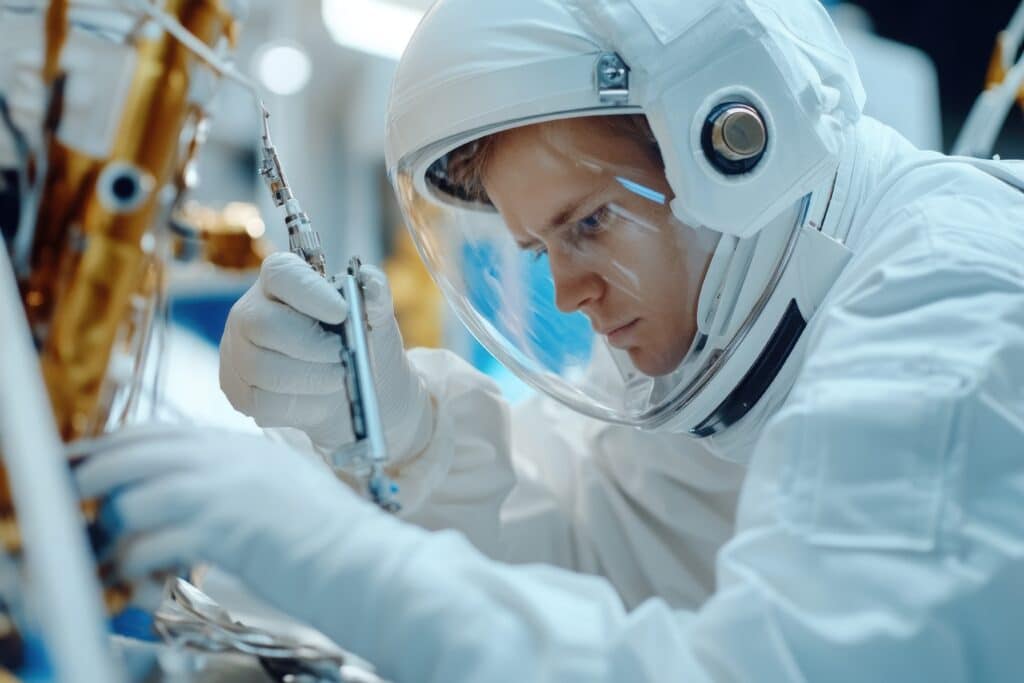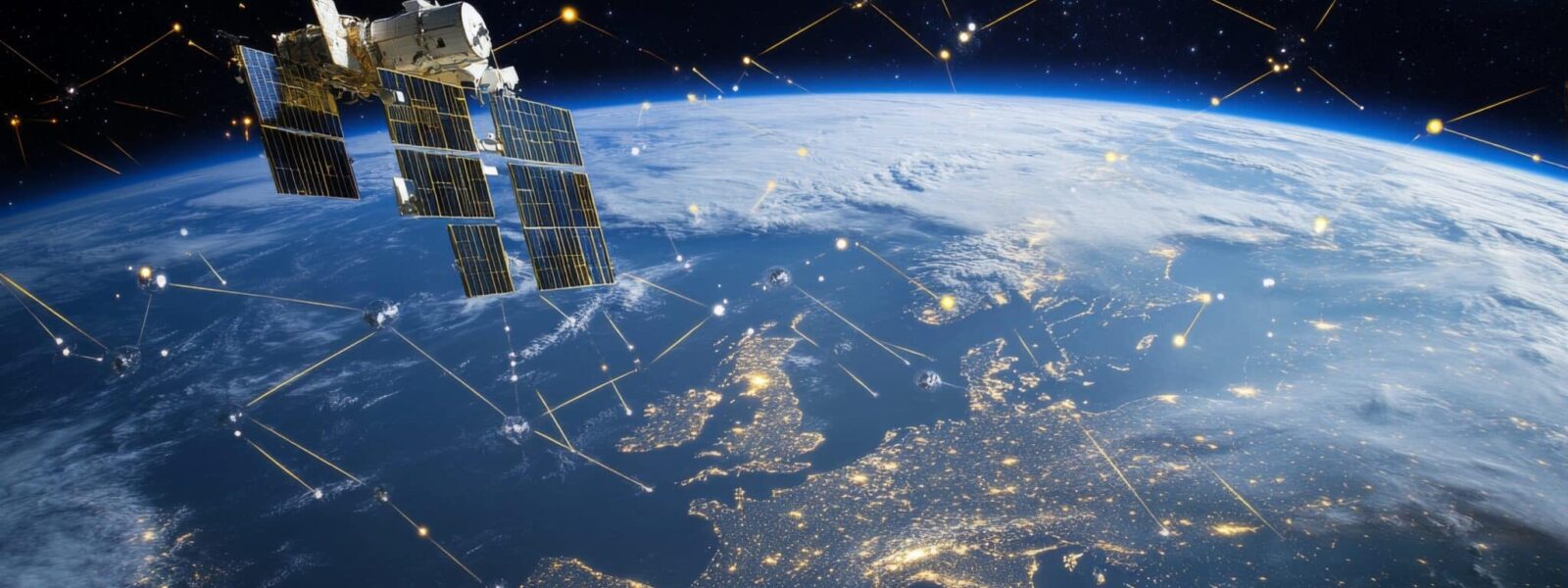Can European space industry compete with American domination?
- Today, European space industry is well developed both in the field of launchers and satellites and in space applications.
- Compared with major players in the sector – namely the USA – Europe’s space industry is rather fragmented so must defend its strategic autonomy and strengthen its capacities.
- Europe also suffers from a lack of private funding in the space sector.
- Around 40% of the European space industry's turnover comes from the commercial sector, a much higher percentage than in the United States.
- Europe has the potential to keep its place as a major global space power thanks to an excellent education system, high-performance industries, etc.
How is the European and international space industry developing today?
Jean-Marc Astorg. The European space industry is now a mature industry that has developed considerably since the 1970s, both in the field of launchers and satellites and in that of space applications – for example, in the use of Earth observational data. And this for various sectors of activity (maritime, mobility, security, environment, insurance and urban planning, to name but a few). Well-known and important players include Arianespace for launchers, and Airbus Defence & Space and Thales Alenia Space for satellites. These companies employ around 30,000 people in the space manufacturing industry in France and 60,000 across all sectors, generating a turnover of around €10bn.
The space sector is currently undergoing an intense and rapid transformation due to various factors:
- the arrival of private American entrepreneurs who have been able to develop new space systems – launchers, constellations – with the help of NASA using considerable resources and new methods. The global space sector has been completely turned upside down and, in my opinion, we are only at the beginning of this transformation.
- technological innovation (digitalisation, reusable launchers, constellations, artificial intelligence), which democratises the use of space data through a drastic reduction in costs.
- the rise of conflicting interests in space, which is a consequence of the increased use of space resources.
- and finally, the revival of projects to return to the Moon and Mars in the context of a new race between the United States and China, this time with the aim of establishing a permanent base on the Moon.
In this context, the United States has become a world leader, together with China, in the field of launchers (Falcon 9, Starship, New Glenn), connectivity constellations (Starlink) and manned exploration. However, Europe is in pole position for when to comes to Earth observations – for example, to survey climate-related changes across the globe.
Europe, however, does suffer from an excessive fragmentation of its space industry, which is still segmented into distinct industrial sectors – for launchers, satellites, applications and telecommunications operators. This situation calls for radical measures:
- The first is to defend our strategic autonomy and to prioritise Europe, with the aim of safeguarding our own satellite launch capability and continuing to secure independent communication.
- The second is, of course, to increase these capabilities to be able to compete with American companies such as SpaceX.
Are the historical players as important as before?
We are witnessing the emergence of “Newspace” in Europe. Start-ups that are mainly privately funded and exploit new development methods are therefore more flexible than the longer-standing players. There are now several hundred start-ups established in Europe, but, again segmented for different activities: launch, observation and connectivity. Since these start-ups have only been created in the last few years, they do not yet have the critical mass needed to face American competition.

Partnerships between long-standing players and new entrants is inevitable, but they will have to be accompanied by specific measures so that the best companies can develop and grow. Initial investment in start-ups is less problematic because funding is available, but it becomes more complicated when it comes to raising, say, a hundred million euros. There is a significant lack of private funding in Europe compared to the United States. This is probably due to cultural differences, insofar as venture capital is still a rather an American concept.
Restructuring will take place, with regroupings and mergers, because, as mentioned, the European space sector is overly fragmented. Today’s markets are global markets, so significant consolidation at the European level will be necessary to prevent certain companies from disappearing. It should also be mentioned that European industry is very sensitive to markets: approximately 40% of the European space industry’s turnover comes from the commercial sector. This figure is much higher than in the United States.
Future prospects in the field
Strategic autonomy projects in Europe will therefore be crucial, in particular the development of a European connectivity constellation. In this sense, these projects will have to be applied across all space sectors. Solving the problem of differential investment between the United States and Europe is also crucial; the United States has a public budget of around 70 billion dollars per year (although this may change with the new Trump administration) while in Europe it is just 12 billion dollars per year.
An autonomous and sovereign telecommunications service
In this context, we can mention the IRIS² programme, which is an autonomous and sovereign telecommunications service and whose concession contract was signed last December between the European Commission and a European consortium of telecom operators (Eutelsat, SES, Hispasat). This new infrastructure will complement the Galileo navigation constellation and the Copernicus Earth observation programme.
There is also the American Artemis exploration programme, for a sustainable return to the Moon. Launched by President Trump’s first administration, it could be called into question by his new administration. If the programme is significantly modified, this will inevitably have consequences for Europe, which is participating in it. In his inauguration speech in January, Trump stated that America should plant its flag on Mars. The United States therefore wants to prioritize Mars and go there alone. This is a rather different approach to the Artemis programme, which is an international collaboration. In fact, Starship (from SpaceX) should be used to send probes to Mars during this decade, to set up experiments there. Manned flights will be more likely during the next decade, which means that perhaps by 2035, there will be Americans on Mars.
Will Europe follow suit?
In reality, there is no economic interest for going to the Moon or Mars, even if some say that there are minerals that can be mined on the Moon. In my opinion, the Moon has a become a geopolitical subject – a race between the United States and China.
As for Mars, the planet is first and foremost of scientific interest. We must go to Mars, preferably with probes, to understand why water disappeared from the Red Planet, why the Earth and Mars experienced fairly comparable growth at the beginning of their evolution and why Mars became uninhabitable while life was able to develop on Earth. Was there ever life on Mars? These are scientific questions, but we don’t need to send humans to the planet to answer them. Elon Musk’s vision is to make Man a multi-planetary species, a vision that is not necessarily shared by the United States, and certainly not by Europe.
In short, we have all it takes in Europe to keep our place among the world’s leading space powers: an excellent education system, high-performance industry, academic research at the highest international level and high-performance space infrastructures (launchers, satellites, ground facilities). We must also defend the values that are dear to us: protecting the planet, combatting and adapting to climate change, trusting science, and international cooperation for a safer world. Europe was built on these values. And in the future, it is important that we hold onto these.














